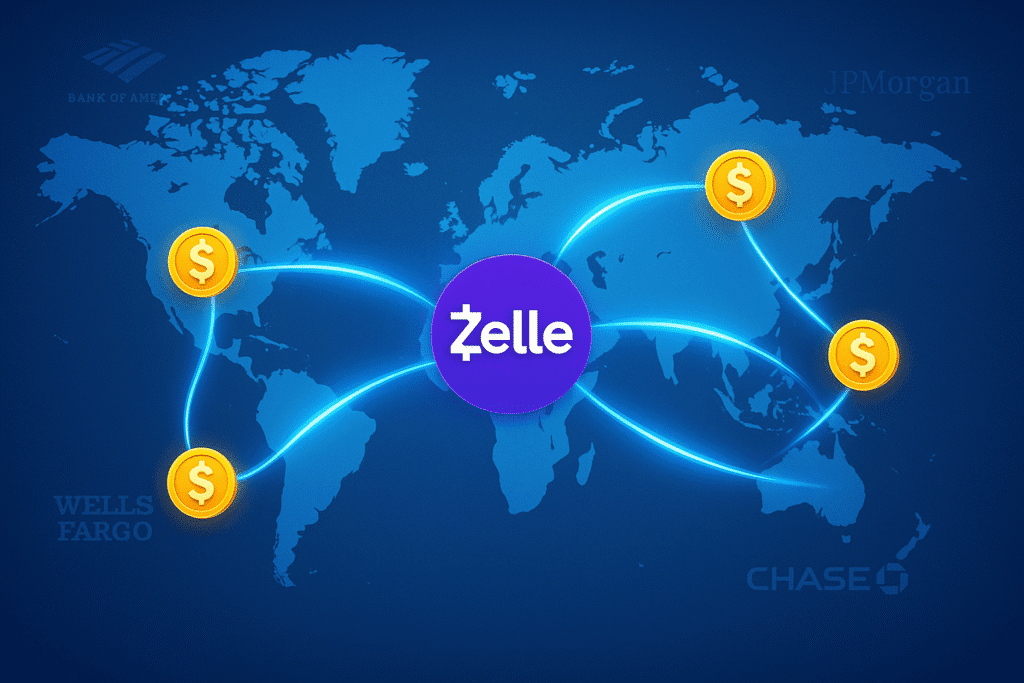Zelle uses stablecoins for faster cross-border transfers. The recently passed GENIUS Act in the United States provides clear rules and will facilitate Zelle’s global innovation drive. Major US banks are backing Zelle’s blockchain-based cross-border network.
Zelle, a payment processor widely used by millions of Americans for instant peer-to-peer (P2P) money transfers, will now use stablecoins to power international transactions.
Notably, the move, announced by Zelle’s parent company Early Warning Services, highlights how fiat-backed digital tokens are rapidly reshaping global finance.
Zelle brings stablecoin integration to the world
Zelle has been a staple of domestic banking apps for years, allowing users to send and receive money in seconds.
Now, Early Warning Services says it will extend its speed and reliability to cross-border payments using stablecoins.
This initiative aims to make international payments as seamless as Zelle’s domestic payments, and faster, cheaper and more reliable than traditional methods.
“Zelle has changed the way Americans send money at home,” said Cameron Fowler, CEO of Early Warning.
“We are now beginning our efforts to provide the same level of speed and reliability for Zelle consumers sending money to and from the United States.”
Fowler added that the company invests “at the intersection of consumer needs, banking capabilities and global opportunities.”
Early Warning Services, which is jointly owned by Bank of America, JPMorgan Chase, Wells Fargo, Capital One, PNC, Trust and US Bank, said the initiative is available to all financial institutions in the Zelle Network.
The company, which works with more than 2,500 banks and credit unions, calls the new program the foundation for “faster, more reliable cross-border money movement.”
Zelle’s move is driven by U.S. regulatory clarity
Zelle’s international expansion comes amid a more friendly regulatory environment for digital assets in the United States.
The US GENIUS Act, signed into law earlier this year, created a federal framework for the issuance and supervision of stablecoins.
The Early Warning CEO said clearer rules will allow Zelle to innovate “more quickly” and focus on safely expanding its network across borders.
Under the Trump administration, regulators have taken a more flexible stance toward blockchain-based assets.
This clarity has encouraged not only Zelle’s parent company, but also major companies such as Amazon, Meta, and PayPal to explore their own stablecoin projects.
And the timing is right. According to Myriad market data, the total stablecoin capitalization is $312 billion and is expected to exceed $360 billion by January 2026.
Standard Chartered recently estimated that stablecoins could transfer up to $1 trillion in deposits from banks in emerging markets within three years.
Additionally, Zelle’s decision also reflects increased competition in global payments.
Fintech companies such as PayPal, Revolut, and MoneyGram are already building cross-border services that appeal to young, digital-first users.
Traditional money transfer providers like Western Union are facing increasing pressure as new technology makes international money transfers faster and cheaper.
Despite entering the peer-to-peer space later than Venmo and Cash App, Zelle quickly became a dominant force in domestic payments.
It currently processes roughly twice as many daily transactions as Venmo and five times as many transactions as Block’s Cash App.
This scale gives Early Warning Services confidence that its stablecoin-powered model can compete globally, backed by the reliability and regulatory credibility of the U.S. banking system.


